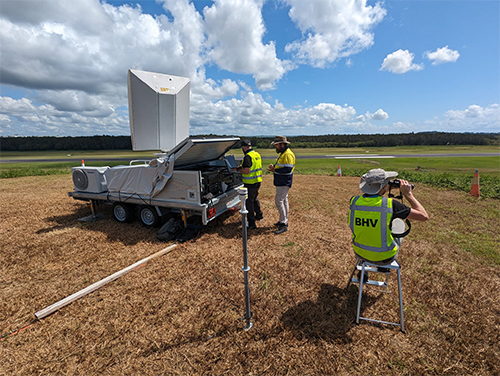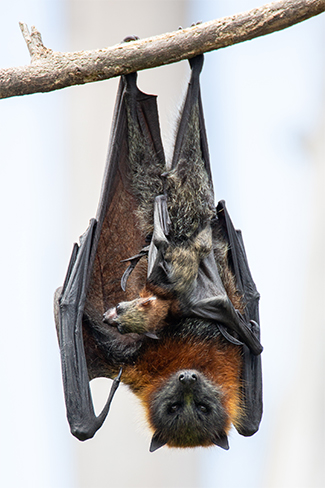Contact: Samuel Hughes
STARKVILLE, Miss.—From some 8,000 miles away, Mississippi State scientist Manuel Ruiz-Aravena in the university’s Forest and Wildlife Research Center is studying flying foxes, or fruit bats, in Australia to determine the likely causes of viral spillover from animal to human.
The assistant professor in wildlife, fisheries and aquaculture watches thousands of signatures streak across his computer screen as a cauldron of flying foxes leave their roost near Australia’s east coast to forage. It’s a novel experience made possible for the first time using emerging technology—live radar—alongside Ruiz-Aravena’s international research.

“It sounds cliché but imagine building the first telescope. No one before has seen Saturn this clearly, and now you’re seeing it. This is the same—no one has ever seen a flyout of bats at this resolution, in real time,” Ruiz-Aravena said.
Ruiz-Aravena is lead researcher on a project studying the ecology of Australian flying foxes, which host Hendra virus, a disease primarily found in Australia that can infect both humans and horses. His work aims to help prevent virus spillover from bats to humans.
“We’re studying transmission. How do bats encounter horses? How and when and how much virus do bats shed?” Ruiz-Aravena said.
The team uses a mobile radar system developed by Robin Radar Systems placed near flying fox roosts and continuously monitors their movements.
“We were first involved in environmental studies involving birds, but we’re starting to have very diverse applications for the radars,” said Sibylle Giraud, vice president of wind and environmental practice at Robin. “We seek to provide tools to solve environmental issues globally.”
“Without this system, we couldn’t observe collective bat behavior,” Ruiz-Aravena said. “Even with GPS trackers on many bats, we might not understand the group. We want to see how bat colonies perceive the environment and how to prevent contact with horses. This is the first time this system has been deployed to answer those questions.”

Recent habitat destruction has pressured Australian flying foxes to forage on fruits or non-native flowers, which puts them into closer proximity to horses.
“That’s why it’s called ‘land use induced spillover.’ You clear the forest, less habitat compromises bat health, and eventually they shed more viruses which are transmitted to humans and other animals,” Ruiz-Aravena explained. “We hope to repair the system and determine how to restore habitat to prevent viral spillover.”
Ruiz-Aravena collaborates with BatOneHealth, a global team studying bat-borne pathogen emergence. Andrew Hoegh, Montana State University associate professor, is synthesizing the Australian data.
“Scientists believe viruses spill over from animals to humans frequently, but often, there’s no way to know because these viruses may not have detrimental effects on their animal reservoir. When Hendra virus spills over to a horse, the animal often gets sick or dies. This gives us a historical record of when spillovers have occurred, which is unique amongst viral systems,” Hoegh said.
This historical record of Hendra spillovers, combined with field data, climate research, immunology experiments and decades of previous flying fox behavioral research allowed the team to build a model to predict spillover occurrence.
“If we restore habitat for bats in winter, we stop the whole cascade of events,” Ruiz-Aravena said. “When bats forage on native flowers, they are in better health and seem less likely to shed viruses.”
The Australian research is a framework for studying viral systems across the globe. BatOneHealth researchers apply similar principles in Bangladesh, where flying foxes carry Nipah virus, closely related to Hendra.
Ruiz-Aravena said while many discussions about controlling viral outbreaks are medical in nature, BatOneHealth focuses on stopping pathogen emergence before an outbreak begins.
“We seek to understand how we can manage bat behaviors that allow transmission,” Ruiz-Aravena said. “People sometimes think these viruses are inevitable, but we can stop them if we understand them first.”
For more on MSU’s Forest and Wildlife Research Center, visit www.fwrc.msstate.edu.
Mississippi State University is taking care of what matters. Learn more at www.msstate.edu.